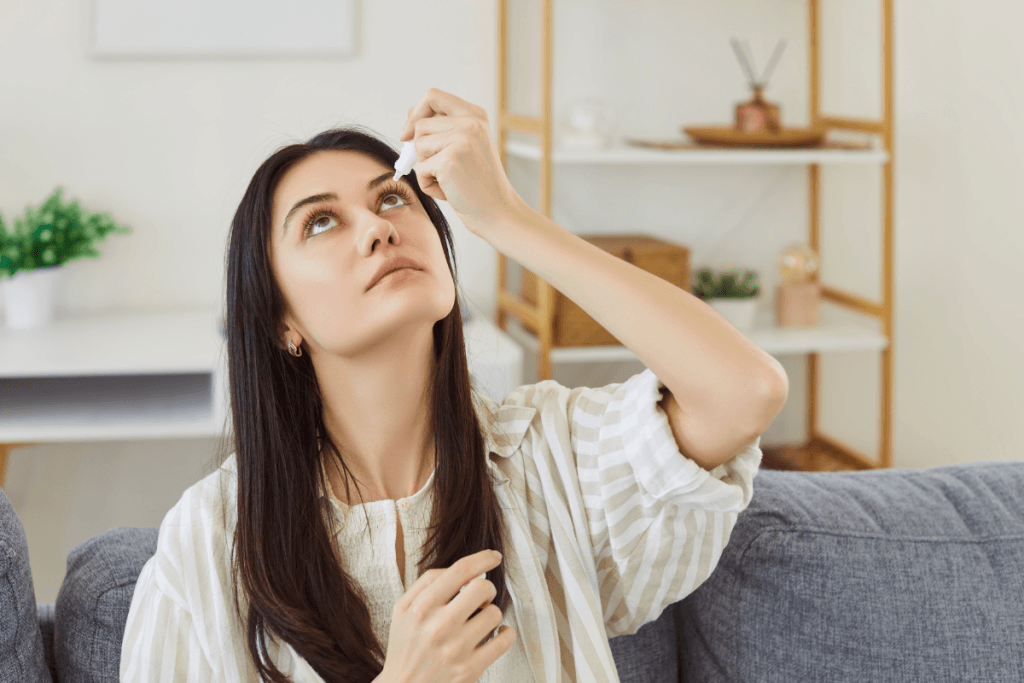Glaucoma affects millions worldwide, with the National Institute of Health estimating that over 111 million people may live with the condition by 2040. It remains the leading cause of irreversible blindness, and reducing intraocular pressure (IOP) is the most effective way to slow disease progression. Elevated IOP damages the optic nerve, often silently, which is why therapies that provide strong, sustained pressure control are vital in ophthalmology practice.
Lumigan eye drops, containing bimatoprost 0.01% or 0.03%, have become a cornerstone in lowering IOP for patients with open-angle glaucoma or ocular hypertension. Their once-daily dosing, strong efficacy, and established safety record make them an essential tool for ophthalmologists and optometrists. At the same time, concerns about affordability, adherence, and tolerability highlight the importance of a comprehensive clinical strategy.
This article examines the clinical evidence, safety considerations, cost challenges, and procurement issues surrounding Lumigan, giving healthcare professionals a complete perspective on its role in practice.
How Lumigan Works
Lumigan belongs to the prostaglandin analog class, which targets aqueous humor outflow rather than production. Its mechanism is distinctive because it improves both uveoscleral outflow and trabecular meshwork drainage, ensuring a dual pathway to lower IOP.
For glaucoma specialists, this dual action is valuable when treating patients with advanced optic nerve damage who require aggressive IOP reduction. By consistently reducing pressure, Lumigan protects against further visual field loss, a priority for clinicians managing chronic progressive diseases.
Clinical Data and Efficacy
Clinical trials have consistently demonstrated Lumigan’s ability to reduce IOP by an average of 25–33% from baseline. In head-to-head comparisons, bimatoprost has shown equal or superior efficacy compared to other prostaglandin analogs such as latanoprost or travoprost.
Healthcare providers often select Lumigan for:
- Patients with insufficient response to alternative first-line therapies.
- Cases where rapid IOP reduction is needed to stabilize vision.
- Patients with adherence challenges, as once-daily dosing is simpler than multi-dose regimens.
Long-term studies confirm that Lumigan maintains its efficacy for years with proper use, underscoring its suitability for lifelong therapy.
Safety and Monitoring
Like all glaucoma medications, Lumigan carries risks that must be addressed in clinical care. The most common Lumigan side effects include:
- Conjunctival hyperemia
- Eyelash growth
- Ocular pruritus
- Increased iris pigmentation
- Periocular skin darkening
These effects are generally mild but can affect patient satisfaction and adherence. Clinicians should monitor patients for less common issues such as uveitis, cystoid macular edema, or worsening of ocular surface disease.
Discussing side effects early helps patients distinguish between cosmetic changes and clinically significant problems, improving their willingness to remain on therapy.
Cost and Patient Compliance
The Lumigan cost can vary widely due to several factors, including individual insurance plans, geographic location, and the availability of various patient-assistance programs. Unfortunately, skipping doses due to financial strain not only affects treatment adherence but also undermines essential therapy goals, as continuous reduction of intraocular pressure (IOP) is vital to preserve the health of the optic nerve and prevent further complications.
Healthcare providers can play a crucial role in mitigating these risks by taking proactive steps, such as:
- Helping patients identify and access manufacturer savings programs that can significantly reduce their out-of-pocket expenses.
- Exploring the option of generic bimatoprost when it becomes available, as generics typically offer a more affordable alternative without compromising effectiveness.
- Incorporating candid discussions about medication affordability into routine follow-up visits, ensuring that financial concerns are openly addressed.
By acknowledging the financial realities their patients face, clinicians can help reduce the likelihood of silent nonadherence, leading to better health outcomes and improved patient satisfaction. It’s essential for healthcare providers to create an environment where patients feel comfortable discussing their limitations so that effective solutions can be explored together.
When to Consider an Alternative
Not all patients respond equally to Lumigan. In cases of intolerance, inadequate IOP control, or cost challenges, considering a Lumigan alternative is appropriate. Options include:
- Other prostaglandin analogs (latanoprost, travoprost, tafluprost)
- Fixed-combination drops (prostaglandin + beta-blocker)
- Non-prostaglandin agents (alpha agonists, carbonic anhydrase inhibitors)
Decision-making should factor in patient-specific considerations, including prior response, coexisting ocular conditions, and lifestyle compatibility. By presenting alternatives proactively, clinicians can maintain adherence while customizing therapy.
Adjustments and Precautions
It is important to recognize that certain patient groups may require individualized, tailored care when prescribed Lumigan medication.
Elderly Patients
Older patients who may experience dexterity issues could significantly benefit from caregiver support during the instillation process. This assistance can help ensure that the medication is administered accurately and effectively.
Patients with Ocular Surface Disease
Individuals suffering from ocular surface disease may require the use of preservative-free formulations to avoid further irritation. Additionally, these patients might benefit from the inclusion of extra tear supplements to maintain adequate lubrication and comfort in their eyes.
Post-Surgical Patients
Those who have recently undergone eye surgery should be closely monitored for any potential complications, such as inflammation or the risk of macular edema. Regular follow-up appointments are essential to ensure their recovery is progressing well.
Recognizing and addressing these nuanced needs is crucial for integrating Lumigan into each patient’s broader ocular health plan safely and effectively, thus optimizing treatment outcomes and enhancing overall well-being.
Clinical Practice Integration
Incorporating Lumigan into an effective glaucoma management program goes well beyond simply writing a prescription. For successful outcomes, it requires a multifaceted approach that includes:
Regular monitoring
Conducting comprehensive intraocular pressure (IOP) checks, utilizing advanced optic nerve imaging technologies, and performing periodic visual field testing to assess and track disease progression.
Patient education
Providing thorough demonstrations of proper drop administration techniques to minimize medication wastage and enhance patient compliance. This may include discussing the importance of adherence to the treatment schedule and addressing any concerns the patient may have regarding their therapy.
Holistic care
Taking into account any comorbidities such as diabetes or hypertension that may adversely impact ocular health and overall patient outcomes. Integrating the management of these conditions into the glaucoma treatment plan is essential for optimal results.
By addressing both medical and behavioral aspects of care, clinicians can ensure that Lumigan effectively contributes to long-term vision preservation and improves the overall quality of life for patients struggling with glaucoma. This comprehensive strategy not only helps in managing the disease more effectively but also fosters a strong partnership between healthcare providers and patients.
Procurement and Patient Guidance
Patients increasingly look to buy Lumigan online or through international vendors. While this may reduce costs, counterfeit risk is significant. Clinicians should emphasize that patients should only order Lumigan from licensed and verified pharmacies.
When patients ask where to buy Lumigan, professionals should guide them toward trustworthy sources, either local pharmacies with a reliable track record or accredited online platforms. For practices and clinics, direct relationships with medical distributors can streamline supply and ensure patients always have access to quality medication.
Buy Lumigan wholesale online now, and take advantage of our affordable pricing options that ensure you get the best value for your purchase. By choosing our trusted sourcing, you not only save money but also gain peace of mind knowing that you’re receiving genuine products.
Takeaways
Lumigan eye drops continue to play a central and important role in the ongoing management of glaucoma and ocular hypertension therapy. While their efficacy and safety are well-established in clinical settings, cost concerns, potential side effects, and access issues can significantly influence patient adherence to the treatment regimen.
Clinicians should remain proactive by discussing affordability options, considering an alternative when appropriate, and guiding patients on how to get Lumigan or buy it online safely and reliably. Supporting patients through both medical management and practical concerns ensures better adherence, fewer treatment gaps, and ultimately, improved visual outcomes and quality of life.
Frequently Asked Questions (FAQs)
How long does it take for Lumigan to work?
IOP (intraocular pressure) reduction begins within just a few hours of instillation, with the maximum effect usually reached within a window of 8 to 12 hours. For sustained control over IOP, daily use of the medication is essential.
Can Lumigan be combined with other glaucoma medications?
Yes, it can. Lumigan is often used in conjunction with other treatments such as beta-blockers, carbonic anhydrase inhibitors, or alpha agonists when monotherapy does not provide adequate control over intraocular pressure.
Is generic bimatoprost as effective as Lumigan?
Yes, generic versions contain the same active ingredient as Lumigan and have demonstrated comparable efficacy in lowering intraocular pressure (IOP). However, it’s worth noting that some patients may report differences in tolerability, which can stem from variations in preservatives or specific formulations used in the generics. Different individuals might respond uniquely, so it’s essential for patients to monitor their reactions when switching medications.
Why is Lumigan eye drops so expensive?
The cost of Lumigan is influenced by several factors, including the extensive research and development expenses, complex manufacturing processes, and the pricing strategies adopted by pharmaceutical companies. Additionally, brand-name medications like Lumigan often carry a premium, which can contribute significantly to a higher price point. Market dynamics, including demand and competition, also play a role in determining the final cost for consumers.






